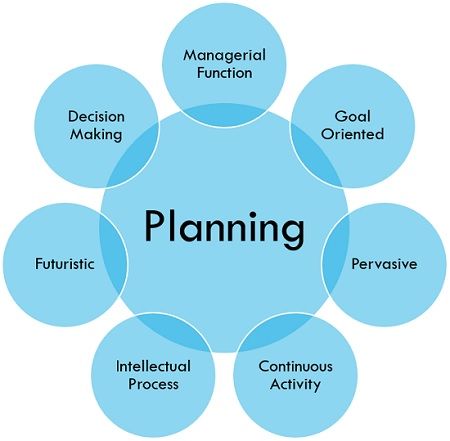Deploying and Activating Resources:Resource Management Task
Updated: February 20, 2023
100
Deploying and activating personnel and resources are essential tasks for any business or organization to perform in order to remain successful and productive. These tasks involve allocating resources to various activities and people, as well as managing the personnel involved. This article will discuss the various aspects of resource management tasks in relation to deploying and activating personnel and resources. It will provide an overview of the different tasks involved, the benefits of having effective resource management, and the challenges that come with such tasks.
Overview of Resource Management Tasks
Resource management tasks are those that involve the allocation and organization of resources for any organization. This includes personnel, equipment, materials, and all other resources. The tasks involve the management of personnel, equipment, and materials, as well as the strategic planning and execution of operations. Resource management tasks can involve both the deployment and activation of personnel and resources. In the case of deployment, personnel and resources are assigned to specific tasks and activities, while activation involves the initiation of operations and activities.

management
Definition of Resource
Management Resource management is the process of deploying or activating personnel and resources in order to achieve desired goals. It involves making choices about how to allocate resources in order to complete tasks in the most efficient manner. It also involves finding ways to optimize the use of resources in order to maximize results. Resource management is a key component of any successful business. It requires a clear understanding of the resources available, the goals that need to be achieved, and the most effective way to utilize resources to reach those goals. It also includes a plan for monitoring and controlling the use of resources to ensure that they are used in the most efficient way possible.
Pursue More: The Art of Corporate Management: Strategies for Success
Planning:
Planning is one of the core resource management tasks. It involves identifying the resources that are needed, determining how much of each resource is needed, and setting goals for how those resources will be used. Planning also involves identifying potential risks that might affect the organization’s resources, as well as developing strategies to mitigate those risks. This planning phase is critical for ensuring that resources are allocated effectively and that the organization has the right resources in the right places at the right times.

management
Acquisition:
Once the planning phase is complete, the next step is to acquire the necessary resources. This may involve purchasing materials, services, or personnel, or it may involve leveraging existing resources. It is important to consider the costs associated with acquiring new resources, as well as the potential benefits that they may provide. Once the resources have been acquired, it is important to ensure that they are properly integrated into the organization.
Allocation:
Once the resources have been acquired, they must be allocated in an effective manner. This involves determining which personnel and resources are best suited for each task and ensuring that the resources are used in the most efficient manner possible. It is important to consider the skills and abilities of each resource, as well as the expected results of their use.
Scheduling:
The scheduling of resources is an important part of resource management. It involves creating a timeline for when each task will be completed and ensuring that the resources are available when they are needed. It is important to consider the availability of personnel, as well as the availability of materials and services. Scheduling is also important for ensuring that tasks are completed on time and that resources are not wasted.

management
Supervision:
Once the resources have been acquired and allocated, it is important to supervise the use of those resources. This involves monitoring the progress of each task and ensuring that resources are being used in an effective manner. It is also important to provide feedback and guidance to personnel on the use of resources, so that they can make the most effective use of those resources.

management
Deployment:
The deployment of personnel and resources is one of the most critical resource management tasks. This involves ensuring that personnel and resources are in the right place at the right time, and that they are being used in an effective manner. It is important to consider the availability of personnel, as well as the availability of materials and services, to ensure that they are deployed in the most efficient manner possible.
Evaluation:
The evaluation of resources is an important part of resource management. This involves assessing the effectiveness of the resources that have been deployed and determining whether they are being used in an optimal manner. It is important to consider the costs associated with each resource, as well as the potential benefits that they may provide. This evaluation process can help to identify areas where resources may be over or underutilized, and can help to ensure that resources are being used in the most effective manner possible.
Resource management is a critical component of any business or organization. It involves the deployment and activation of personnel and resources to ensure the efficient use of resources and to optimize organizational performance. This overview of resource management tasks has provided insight into the various tasks that must be completed to effectively manage resources in an organization. By understanding the different tasks involved in resource management, organizations can ensure that their resources are allocated and used in the most effective manner possible.
Benefits of Effective Resource Management
Effective resource management is beneficial for any organization as it ensures that all resources are being utilized efficiently and effectively. This leads to increased productivity and efficiency, as well as cost savings. Furthermore, it allows organizations to respond quickly and effectively to changes in the environment and market conditions. Additionally, effective resource management helps organizations to identify and address potential risks and problems that could arise.
Effective resource management can result in a number of positive outcomes. It can help to save time and money by ensuring that resources are used in the most efficient manner. It can also help to improve productivity and performance by utilizing resources in the most effective way. Additionally, it can help to reduce risks associated with resource utilization and ensure that resources are used to their full potential. Additionally, effective resource management can help to reduce waste and increase efficiency. By understanding the process of resource management, businesses can ensure that resources are utilized in the most efficient way possible. This can help to save time and money, and can result in increased productivity and performance.
How to Achieve Effective Resource Management
In order to achieve effective resource management, it is important to have a clear understanding of the resources available. The goals that need to be achieved, and the most effective way to utilize resources to reach those goals. Additionally, it is important to have a plan for monitoring and controlling the use of resources in order to ensure. That they are being used in the most efficient manner possible.
It is also important to keep up to date with the latest technology and trends in resource management. This can help to ensure that resources are being used to their full potential and that any new opportunities. Or risks associated with resource utilization are identified and addressed. Additionally, it is important to keep an open dialogue with employees to ensure that. They are able to work in an efficient manner and to identify any areas of improvement.

management
Finally, it is important to have clear goals and objectives for resource management. This can help to ensure that resources are being used in the most effective way and that any potential risks. Are identified and addressed in a timely manner. Additionally, it can help to ensure that resources are used to their full potential and that any new opportunities or risks associated with resource utilization are identified and addressed.
Challenges of Deploying and Activating Personnel and Resources
Deploying and activating personnel and resources can be a challenge, as it involves a lot of planning and coordination. The process of deployment and activation needs to be carefully planned and executed. In order to ensure that the personnel and resources are being allocated in the most effective and efficient manner. Additionally, there are often a lot of stakeholders involved in the process, from managers to employee. And it can be difficult to manage the expectations of all these stakeholders.
Furthermore, there can be a lot of resistance from personnel and resources when it comes to deployment and activation. This can be due to a lack of understanding of the importance of the task. Or due to a lack of trust in the organization. It is therefore important to ensure that personnel and resources understand the tasks they are being assigned to. And to build a culture of trust and respect within the organization.
Conclusion
In conclusion, deploying and activating personnel and resources are essential tasks for any business or organization. These tasks involve allocating resources to various activities and people, as well as managing the personnel involved. Effective resource management is beneficial for any organization, as it ensures that all resources are being utilized efficiently and effectively. However, there can be a lot of challenges associated with deploying and activating personnel and resources. Such as managing the expectations of all stakeholders and overcoming resistance from personnel and resources.
Please Write Your Comments